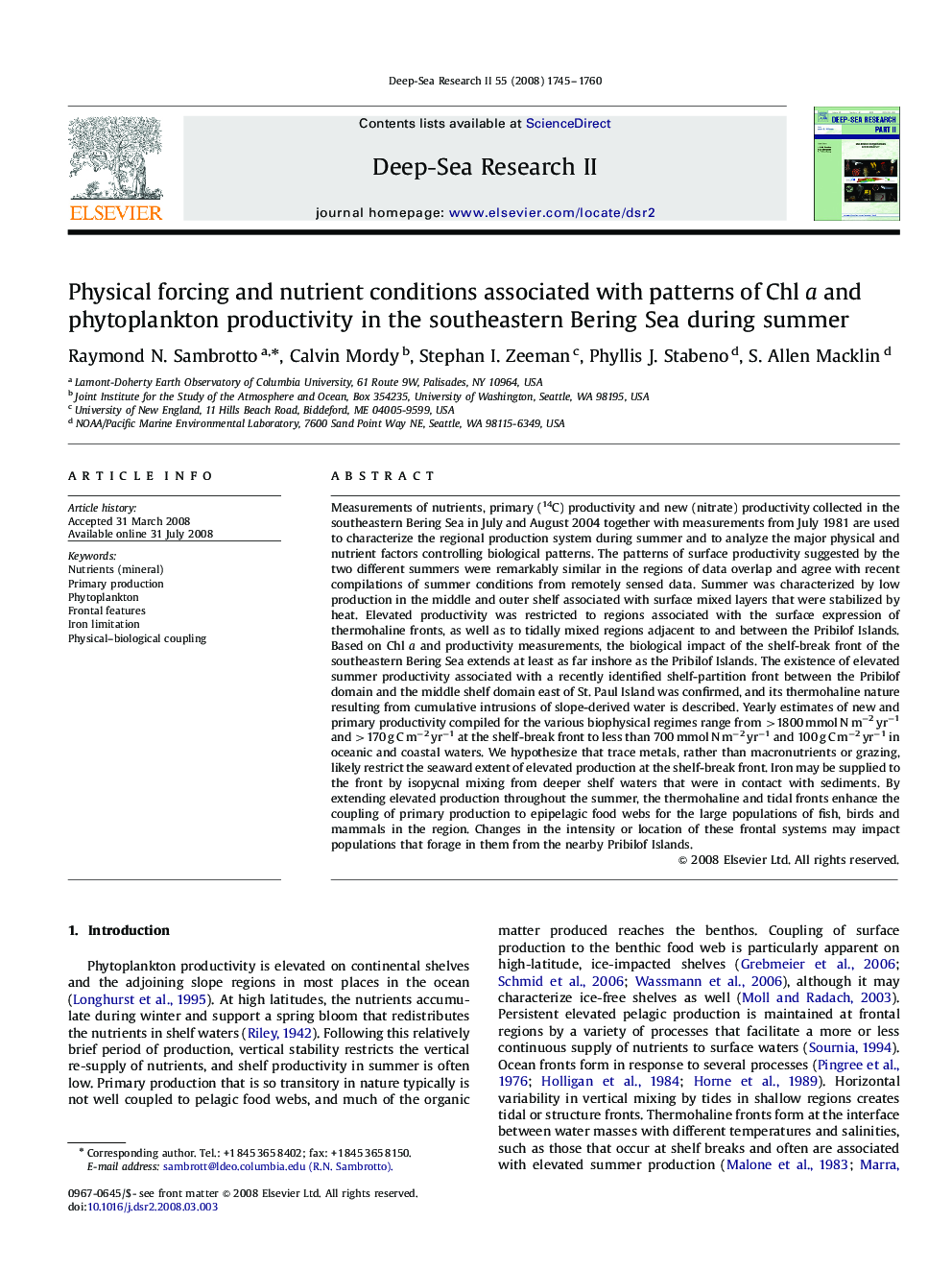| کد مقاله | کد نشریه | سال انتشار | مقاله انگلیسی | نسخه تمام متن |
|---|---|---|---|---|
| 4537389 | 1626493 | 2008 | 16 صفحه PDF | دانلود رایگان |
عنوان انگلیسی مقاله ISI
Physical forcing and nutrient conditions associated with patterns of Chl a and phytoplankton productivity in the southeastern Bering Sea during summer
دانلود مقاله + سفارش ترجمه
دانلود مقاله ISI انگلیسی
رایگان برای ایرانیان
کلمات کلیدی
موضوعات مرتبط
مهندسی و علوم پایه
علوم زمین و سیارات
زمین شناسی
پیش نمایش صفحه اول مقاله

چکیده انگلیسی
Measurements of nutrients, primary (14C) productivity and new (nitrate) productivity collected in the southeastern Bering Sea in July and August 2004 together with measurements from July 1981 are used to characterize the regional production system during summer and to analyze the major physical and nutrient factors controlling biological patterns. The patterns of surface productivity suggested by the two different summers were remarkably similar in the regions of data overlap and agree with recent compilations of summer conditions from remotely sensed data. Summer was characterized by low production in the middle and outer shelf associated with surface mixed layers that were stabilized by heat. Elevated productivity was restricted to regions associated with the surface expression of thermohaline fronts, as well as to tidally mixed regions adjacent to and between the Pribilof Islands. Based on Chl a and productivity measurements, the biological impact of the shelf-break front of the southeastern Bering Sea extends at least as far inshore as the Pribilof Islands. The existence of elevated summer productivity associated with a recently identified shelf-partition front between the Pribilof domain and the middle shelf domain east of St. Paul Island was confirmed, and its thermohaline nature resulting from cumulative intrusions of slope-derived water is described. Yearly estimates of new and primary productivity compiled for the various biophysical regimes range from >1800 mmol N mâ2 yrâ1 and >170 g C mâ2 yrâ1 at the shelf-break front to less than 700 mmol N mâ2 yrâ1 and 100 g C mâ2 yrâ1 in oceanic and coastal waters. We hypothesize that trace metals, rather than macronutrients or grazing, likely restrict the seaward extent of elevated production at the shelf-break front. Iron may be supplied to the front by isopycnal mixing from deeper shelf waters that were in contact with sediments. By extending elevated production throughout the summer, the thermohaline and tidal fronts enhance the coupling of primary production to epipelagic food webs for the large populations of fish, birds and mammals in the region. Changes in the intensity or location of these frontal systems may impact populations that forage in them from the nearby Pribilof Islands.
ناشر
Database: Elsevier - ScienceDirect (ساینس دایرکت)
Journal: Deep Sea Research Part II: Topical Studies in Oceanography - Volume 55, Issues 16â17, August 2008, Pages 1745-1760
Journal: Deep Sea Research Part II: Topical Studies in Oceanography - Volume 55, Issues 16â17, August 2008, Pages 1745-1760
نویسندگان
Raymond N. Sambrotto, Calvin Mordy, Stephan I. Zeeman, Phyllis J. Stabeno, S. Allen Macklin,